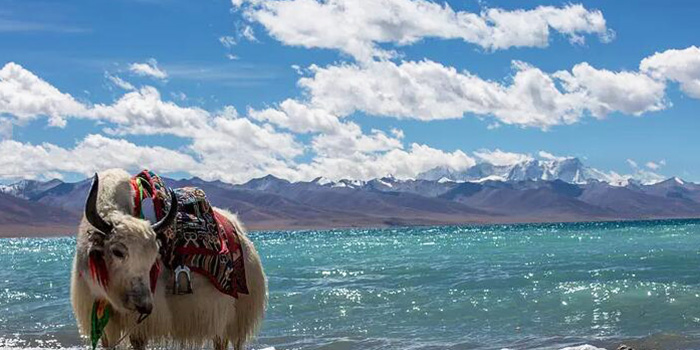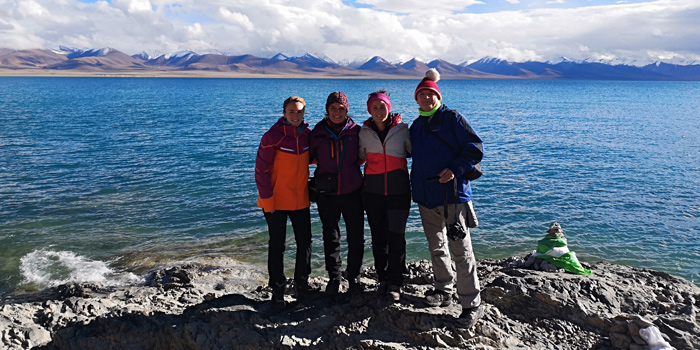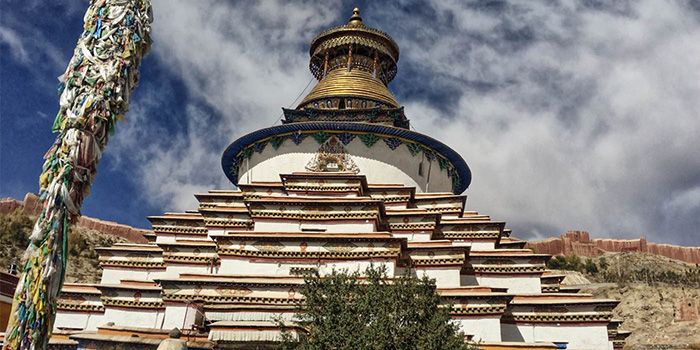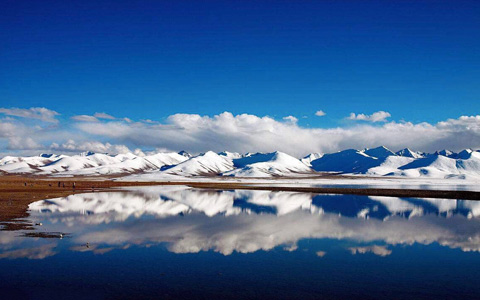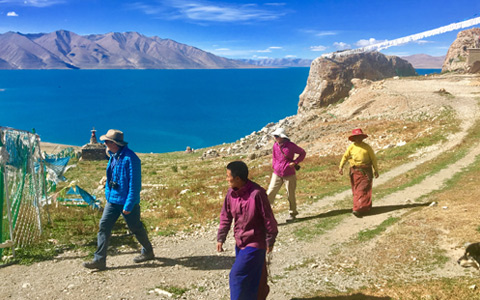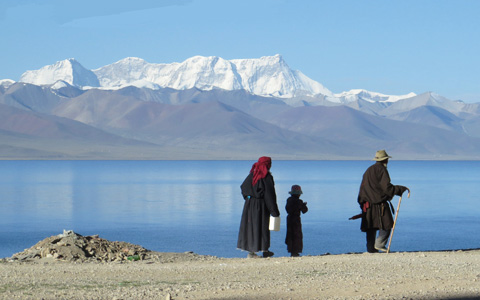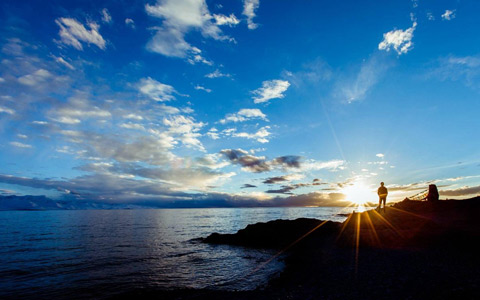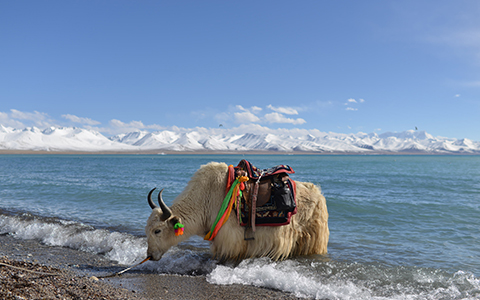How to Get to Namtso Lake
Namtso Lake, nestled in the mesmerizing northern Tibetan Plateau, is a favored pasture for local Tibetan nomads with their yak herds. As the second largest saline lake in China, the largest lake in the Tibet Autonomous Region, and the highest saltwater lake in the world, the holy Lake Namtso also attracts tourists from all over the world.
While planning a trip to this holy Lake in Tibet, it’s essential to explore how to get there by car, by bike, and by train from different gateways.
 Get to Namtso Lake from Lhasa by Car
Get to Namtso Lake from Lhasa by Car
 Get to Namtso Lake from Lhasa by Bike
Get to Namtso Lake from Lhasa by Bike
 Get to Namtso Lake from Xining/Lhasa by Train
Get to Namtso Lake from Xining/Lhasa by Train
 When is the Best Time to Visit Namtso Lake
When is the Best Time to Visit Namtso Lake
 What to Pack for Namtso Lake Tours
What to Pack for Namtso Lake Tours
Where is Namtso Lake
Located about 240 kilometers northwest of Lhasa lies Lake Namtso, one of the region’s most famous and holy lakes. At an altitude of 4,718 meters above sea level, it is surrounded by the snow-capped Nyenchen Tanglha Mountain Range in the northern part of the Tibet Autonomous Region.
Get to Namtso Lake from Lhasa by Car
Traveling to Lake Namtso from Lhasa by road is the most popular way to get to Namtso. The distance from Namtso Lake to Lhasa is around 250 kilometers, which takes about 4 hours by car. Most of the road to Namtso Lake is well-paved, making driving easy. But the part to cross the mountain is not very good, and often be closed due to heavy snow in winter months.
On the way from Lhasa to Namtso Lake, there are several interesting and scenic sites. On the road to Damxung County, you pass the stunning scenery of the Nyenchen Tanglha Mountains, and from Damxung to Namtso you travel over the Nagenla Pass, at an elevation of 5,200 meters. The pass is the main landmark to tell that you are within a short ride of the lake.
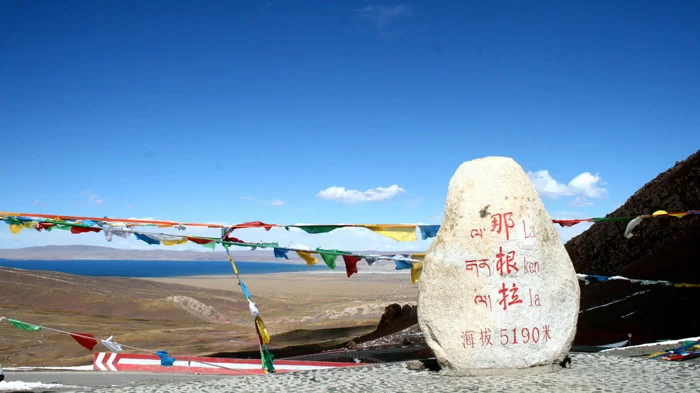 On the way from Lhasa to Namtso, enjoy an overlook of Namtso from Nagenla Mountain Pass.
On the way from Lhasa to Namtso, enjoy an overlook of Namtso from Nagenla Mountain Pass.
Joining our Lake Namtso small group tour could be the best choice for you to get to Namtso from Lhasa by land. Our comfortable tourist vehicles and experienced local Tibetan drivers will ensure a safe and comfortable journey for you.
Insider Tips:
If you want to take a self-driving tour to Namtso Lake, please feel free to contact us to get more information about how to drive your car in Tibet.
Get to Namtso Lake from Lhasa by Bike
For cycling enthusiasts seeking a memorable and manageable adventure, the 8-Day Lhasa to Namtso Lake Bike Tour promises an immersive experience into the heart of Tibet. From the serene Namtso Lake to the vibrant streets of Lhasa, this journey encapsulates the essence of Tibetan beauty.
This popular cycling expedition spans a total distance of approximately 155 kilometers, offering you a chance to witness the breathtaking Tibetan landscape. The bike tour kicks off in Lhasa, allowing participants to acclimate to the high altitude and explore iconic sites like the Potala Palace, Johkang Temple, and Barkor Street during the initial days.
 A cycling tour from Lhasa to Lake Namtso is an adventurous way to explore the grasslands of Northern Tibet.
A cycling tour from Lhasa to Lake Namtso is an adventurous way to explore the grasslands of Northern Tibet.
As the journey unfolds, you pedal through the well-built Qinghai Tibet Road, showcasing vast grasslands speckled with sheep and yaks, traditional shepherd camps, and the awe-inspiring Nyenchen Thanglha mountain range.
The route also provides glimpses of the Qinghai-Tibet railway rushing alongside the road, creating a unique blend of natural and man-made wonders.
Get to Namtso Lake from Xining/Lhasa by Train
As Namtso Lake is located in Nagqu, you can also take a Tibet train from Xining or Lhasa, get off at the Station, and then take a car to Namtso Lake.
You can view the amazing scenery along the world’s highest railway, the Qinghai-Tibet Railway while taking a train to Namtso Lake. The train from Xining to Nagqu takes around 15 hours, which covers one night onboard.
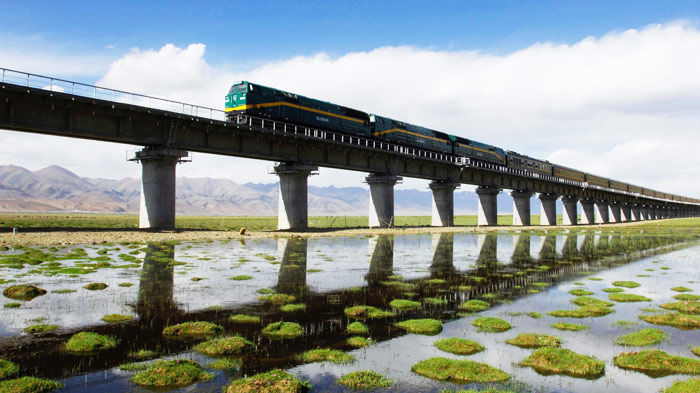 Getting to Namtso Lake by the Qinghai-Tibet train can be a special travel experience.
Getting to Namtso Lake by the Qinghai-Tibet train can be a special travel experience.
There is still 200 kilometers away from Nagqu Railway Station to the Namtso Scenic Area. In order to make your journey smoother, we recommend taking the Tibet train from Xining and getting off at Nagqu. Our tour guide and driver will pick you up at Nagqu Railway Station and take you to Namtso Lake.
If you want to take a train from Lhasa to Nagqu, please notice that the train journey from Lhasa to Nagqu takes approximately 3.5 hours. It generally arrives at Nagqu Railway Station in the afternoon, which is not a good time for visiting Namtso Lake. You may need to stay in the county for one night and travel to Namtso Lake the next morning.
When is the Best Time to Visit Namtso Lake
The best time to visit Namtso is in summer when the grasslands are at their greenest and most lush. Wild animals such as black bears, yaks, wild donkeys, bharals, foxes, roe deer, and marmots can often be found leisurely grazing along the lakeshore, and the lake and its surroundings are filled with life and activity.
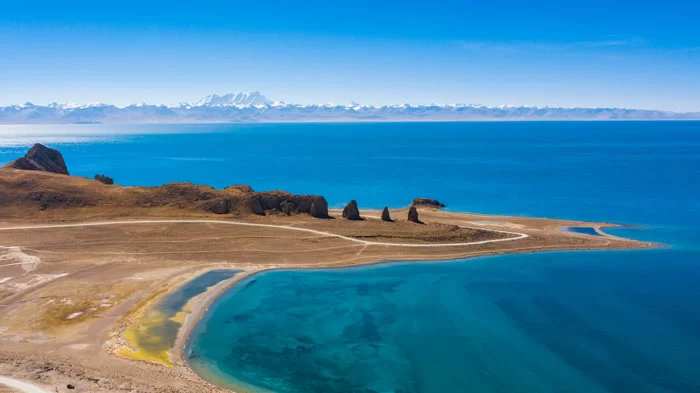 Visiting the holy Lake Namtso on a sunny day allows you to appreciate the stunning view of this crystal-clear lake.
Visiting the holy Lake Namtso on a sunny day allows you to appreciate the stunning view of this crystal-clear lake.
The hundreds of species of migratory birds come to the lake in summer, to build their nests and lay their eggs, spending the rest of summer and fall feeding and rearing their hatchlings. The lake is filled with saltwater squama fish, and it is home to an abundance of valuable medicinal plants such as the Chinese caterpillar fungus, fritillaria, and the snow lotus flower.
The grasslands around the lake are full of sheep and yak herds throughout summer when the pasture land is best for grazing. The nomads travel to the area for summer grazing, allowing their herds to get the best of the lush, nutritious grass while it lasts.
In winter the lake is completely frozen and surrounded by ice, which thaws in the spring, feeding the lake with the snow-melt from the surrounding mountains. As the ice melts, the lake turns a spectacular shade of turquoise, making the site perfect for photographers. The crystal-clear water and the stunning scenery make it one of the most beautiful places in Tibet.
What to Do at Namtso Lake
For those who love to take photos, there are few better places in the world than Lake Namtso. The prime time for photography is within half an hour of sunrise or sunset, when the view of the mountains from the Tashi Peninsula makes them glow orange in the low-lying sunlight. The hilltop of the Tashi Peninsula is high enough to get a great view of the Nyainqentanglha Range and Namtso Lake, although the hilltop is 5,000 meters above sea level and the wind is very strong, making the climb to the top quite strenuous.
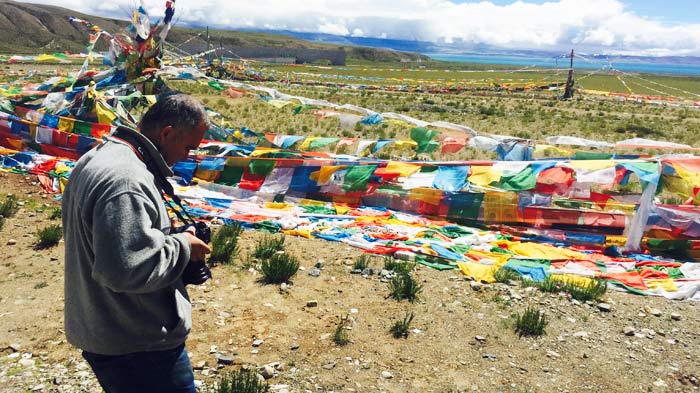 Lake Namtso is the best place in the world for those who love to take photos.
Lake Namtso is the best place in the world for those who love to take photos.
There are several other excellent shooting locations around the lake where you can get some really spectacular photos. The Yingbin Stone, also called the Gods Gate, is a pair of huge rocks that are hung with colorful prayer flags all year round. They are surrounded by Marnyi Stones and bleached yak skulls, giving your photographs the perfect foreground. The Gassho Stone, or “parents stone” is written in legend to be the incarnated symbol of the faithful love of the Nyainqentanglha Range and Namtso Lake.
Besides photography, you can do many other things when visiting Namtso Lake. In spring and fall, when there are fewer clouds, the sky is perfect for stargazing. With an elevation of 4,800 meters, and no light pollution at all, the sky above the plateau is filled with billions of starry lights. The thin air, clear sky, and fried atmosphere are all crucial elements for getting a perfect view of the heavens. When night falls, the Milky Way can be seen in the sky, appearing as a foggy cloud. Visitors can also take in the beautiful peninsulas of Zaxi and Tashi-dor, or walk the kora around the lake.
What to Pack for Namtso Lake Tours
Tibet is a land that is set on a high-altitude plateau, which means that the nights can get fairly cold, even in the summer months. Clothing should be suitable for traveling through rough and rugged areas, with warm pants and jackets for colder times, and sturdy walking boots and thick socks for a Namtso Lake trek. Boots are better than rubber shoes when walking on rough terrain, and will protect your feet well against slips on the often uneven ground.
For those going camping, it is best to travel light and keep a small pack with you for water, snacks, a camera, etc. You can take larger packs as well, which can stay in the vehicle when walking around the sites you visit.
As there are few restaurants in the area, it is a good idea to take some dried and packed food along, especially if you are not fond of Tibetan dishes. There are no Western restaurants near Namtso.
Pack the toiletries you would normally pack for a vacation, as well as sunscreen, sunglasses, and lip balm. The sun can burn the skin easily in the thinner air of the plateau, and the wind is strong enough to chap lips easily.
Medicines for altitude sickness can be brought, after discussing your options with your doctor, and it is a good idea to carry headache tablets and cold remedies, as well as a basic first aid kit.
More Travel Tips for Getting to Namtso Lake
Before setting out on the pilgrimage to Namtso Lake, it's crucial to be well-prepared. When visiting Tibet there are a few things that would be advisable to remember, so that you have a great tour.
1. Ensure you have the Tibet Travel Permit, a prerequisite for entering this sacred region.
2. be mindful that the road may be closed due to heavy snow in winter, impacting travel plans
3. Altitude sickness is a common concern, so pay attention to your body's signals along the way and acclimatize accordingly.
4. When walking around places like Jokhang Temple or Lake Namtso, always remember to walk clockwise, in the same direction as the other pilgrims.
5. When visiting temples and monasteries in Tibet, it is polite to ask before taking photos of the interior, and with locals it is best to ask permission before including them in your pictures.
6. The altitude at Namtso Lake is higher than that of Lhasa, so it is advised not to exert yourself too much. At its mildest, altitude sickness can cause discomfort.
7. Be sure to proceed gradually when ascending in altitude, avoiding excessive exertion.
8. If you're unsure about your taste for Tibetan food, many places usually have a Chinese menu as an alternative. Alternatively, you can bring along packaged items like instant noodles for times when Tibetan dishes might be the only option available
Conclusion
Embarking on the journey to Namtso Lake is not just a physical expedition but a spiritual and cultural odyssey. Whether you choose the scenic train ride from Xining or Lhasa, the adventurous bike journey from Lhasa, or any other mode of transportation, the trip to Namtso Lake promises an experience like no other and makes this Tibet tour truly special.

The Lhasa-born prodigy used to study business overseas, and got his Bachelor of Business in Nepal and India before moving back to his homeland. With pure passion for life and unlimited love for Tibet, Kunga started his guide career as early as 1997.
Responsible, considerate, and humorous, he devoted his entire life to guiding and serving international tourists traveling in Tibet. As a legendary Tibetan travel guru with 20-year pro guide experience. Currently, he is working in Tibet Vista as the Tour Operating Director. Whenever our clients run into trouble, he is your first call and will offer prompt support.
Related Articles & Posts
Most Popular Tibet Tour Packages
-
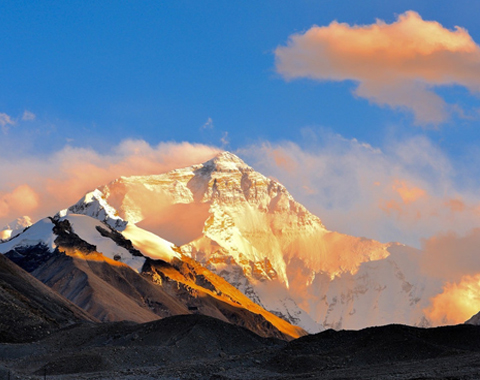
Lhasa - Gyantse - Shigatse - Everest Base Camp - Shigatse - Lhasa
USD939
View Details -
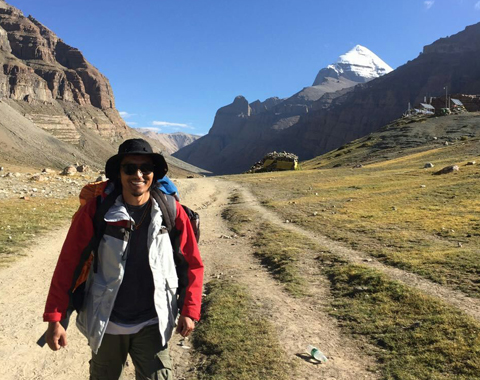
Lhasa - Gyantse - Shigatse - E.B.C - Saga - Kailash Trek - Darchen - Lake Manasarovar - Saga - Gyirong - Tingri - Lhasa
USD2059
View Details -
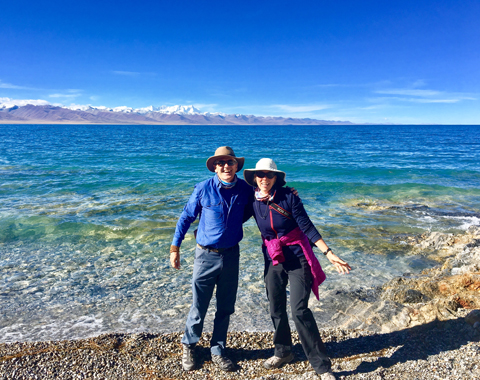
10 Days Lhasa to Everest Base Camp and Namtso Lake Small Group Tour
Lhasa - Gyantse - Shigatse - EBC - Shigatse - Lhasa - Namtso Lake - Damxung - Lhasa
USD1289
View Details -
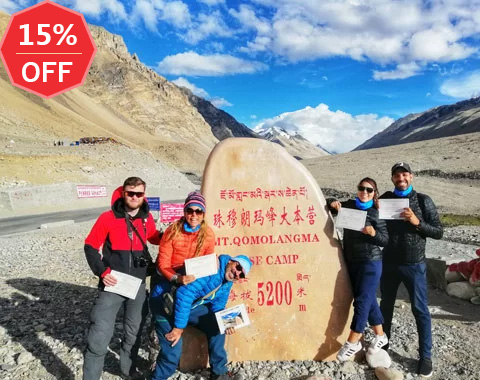
8 Days Driving Across Himalaya Overland Adventure from Kathmandu to Lhasa
Kathmandu - Gyirong - Everest Base Camp - Tingri - Shigatse - Gyantse - Lhasa
USD1069
View Details -
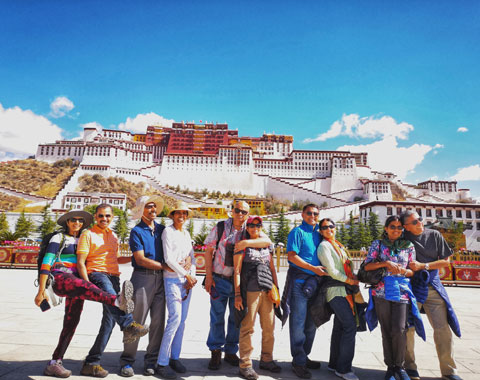
4 Days Lhasa Impression Small Group Tour: Explore the Heart of Tibet and Mingle with the Locals
Lhasa
USD509
View Details -
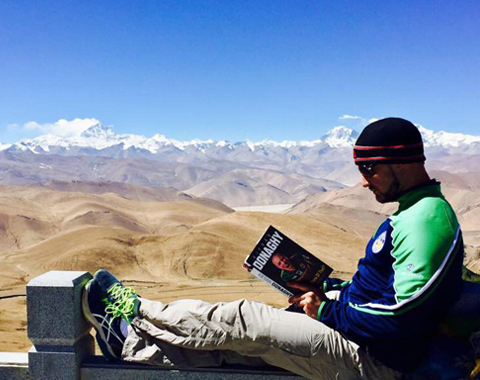
Lhasa - Gyantse - Shigatse - Everest Base Camp - Gyirong - Kathmandu
USD979
View Details -
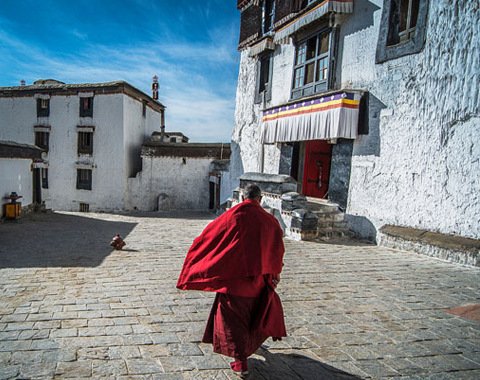
Lhasa - Gyantse - Shigatse- Lhasa
USD799
View Details -
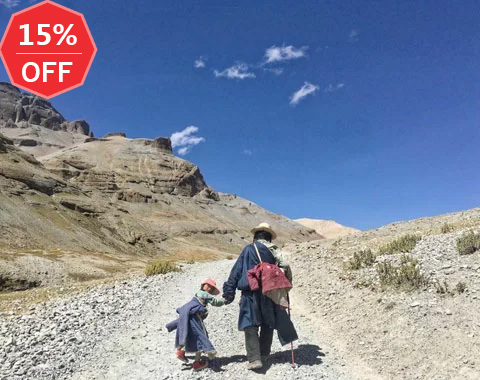
13 Day Lhasa, Mt. Everest, Mt. Kailash, Lake Manasarovar and Kathmandu Adventure Tour
Lhasa - Gyantse - Shigatse - EBC - Saga - Darchen - Kailash Trek - Darchen - Saga - Gyirong - Kathmandu
USD2059
View Details
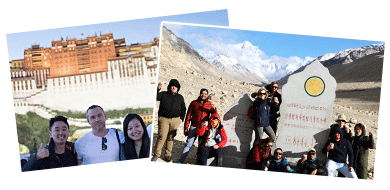

.jpg)



